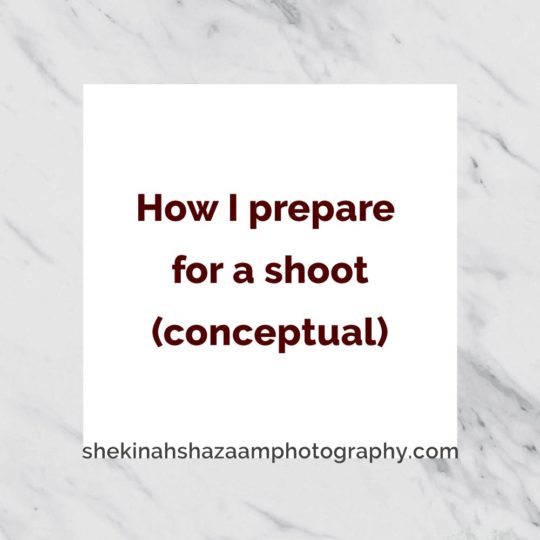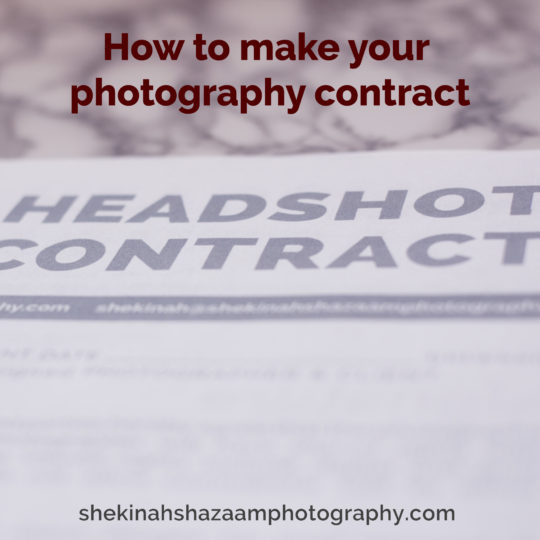
There comes a time in many artists’ lives when they must buckle up and prepare themselves to be professional. Long gone are the days of free shoots or word-of-mouth promises. Once you reach a certain point & realize that you want to make your photography a business, there are a few important things you must have.
One is a contract.
The business side of the arts was not discussed much while I was in school, so most of what I have learned has been through online research and just experience. So hopefully I can add to the pile of resources available on the vast World Wide Web.
Why do you need a contract?
Aside from the professionalism mentioned above, having a contract ensures that both you and the client know exactly what is expected from the shoot. You have everything laid out, the price is determined, & a timeline is established. This is a physical piece of your agreement. I don’t care if you trust your client with your life, sometimes people can be shady and try to not pay their full amount or complain about what was already agreed upon. By both having a copy, you can ensure that you at least have some proof to bring with you in case you ever do need to seek out legal counsel.
What should be in a contract?
-Your branding (logo, typefaces, etc) to stay consistent with the rest of your marketing collateral.
-A blank line for the date.
-A blank line for the client’s name. (so you don’t have to type up a new one every time.)
-A blank line for both your and the client’s signature. (This is what binds the thing.)
-Sections that clearly define time spent, files provided, & rights. (I’ll discuss these more below.)
-Phrases that make sense. There may be a few legalese words added if need be, but for the most part, both parties should be able to understand what is being said.
How should sections be set up?
There are different ways to organize your contract, but most in regards to photography have these:
Timeline
Files
Payment
Copyright
TIMELINE
In this section you can set your start date (or day of the shoot), have a tentative schedule of how long it usually takes you to edit the images, and a final delivery date.
FILES
Here you will specify the types of images you will be giving to the client. With my packages I provide both digital and print versions for their use.
PAYMENT
You will need to put the total price for your services here. I find that splitting payment in half makes the process move along smoother. I ask for one payment on the day of the shoot & one payment once the final files are given. Splitting payment in half also builds trust between you and the client because they know you have done some work before they hand that money over & you know you are being compensated for that work in a timely manner.
COPYRIGHT
This is a big one. Depending on the type of shooting you’re doing (freelance vs. commercial), you may have to tweak this section. For freelancers, you will have the option to share equal rights with your clients. I like to go this route as it lets me display their images in my portfolio. I also put in a statement that specifically states the images cannot be sold by either myself or the client. The only time you wouldn’t include this is if you’re shooting stock photos through an agency.
But for commercial, you are selling these images to your client so you may have to pass over rights to them as well. They may not allow you to put the images in your portfolio or may have a waiting period. Be sure to discuss what rights, if any, you keep before you finish this type of work.
Should I use the same one for every project I do?
I would suggest that you don’t. Only use one type of contract for one type of project. For example, a wedding client expects different results than a headshot client does, so you would have a separate wedding contract and a separate headshot contract. The prices will wind up being different as well as the timeline and amount of files anyway, so you might as well start out with different types to save yourself the headache later.
When should I give the client the contract?
Preferably before you actually start shooting. If you are able to meet face-to-face awhile beforehand, they will have the chance to read everything over and completely understand your terms. Then on the day of, you both can sign each other’s, tuck them away, & then get to work!
Is there anything else?
Not that I can think of at the moment, but I may at some point need to add more or modify my points. Until then, use the above tips and make that contract like your business depends on it!
May the light be with you.





Sorry, the comment form is closed at this time.